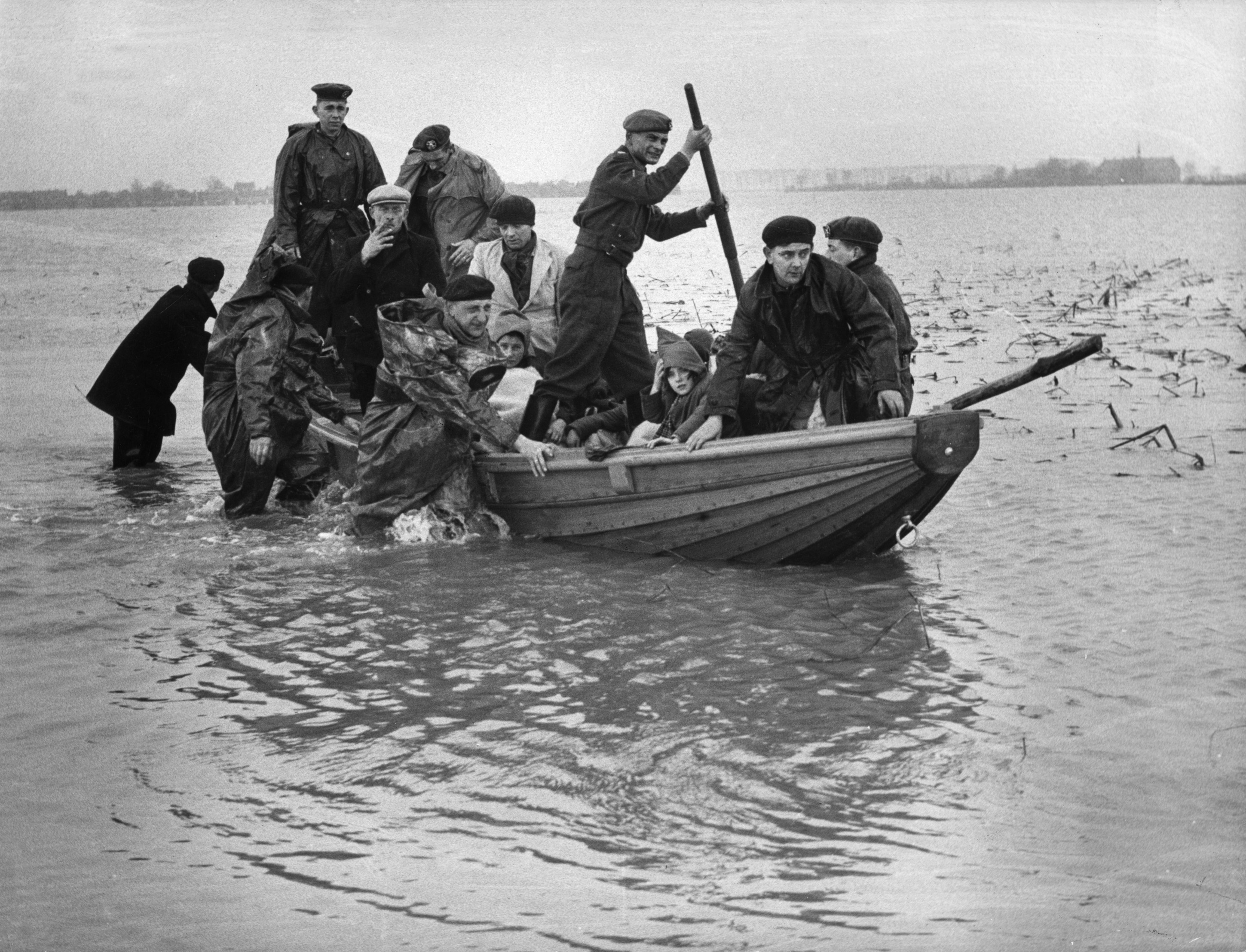
During and after the disaster, many victims needed assistance. People first had to be brought to safety. Fortunately, help came from many different sources.

Many fishermen set sail towards the disaster area during the storm. There, they rescue people from rooftops, dikes, floating on rafts, and clinging to trees.

Local Heroes
People from the affected area also sprang into action. In the photo, you see the statue 'The Two Brothers,' named after the ship of Arie Evegroen. With his ship, he sealed a breach in a crucial dike, saving all of South Holland from the disaster.

Building a Radio Himself
Peter Hossfeld from Zierikzee also played a crucial role. He constructed a simple radio using a bottle and loose components. With this radio, he called for help and saved many lives. His radio, PA0ZKR, is still on display at the Watersnoodmuseum.

It was only on Monday morning that Middelburg received the signal from Zierikzee. They requested rubber boats and food. The military and the Red Cross quickly sprang into action.
Due to the flooding, many areas were difficult to reach. The military deployed aircraft to scout where help was needed. Eef Smithuyzen was a pilot on one of these planes.
How many people were eventually rescued?

Generous Donors
The victims of the disaster lost everything. The National Disaster Fund eventually donated 137.8 million guilders to the victims. The Red Cross collected beds, clothing, and medicines to help them.

Other countries also sent a lot of supplies to assist. This included food, clothing, and sandbags to temporarily seal the dykes.

A Gifted House
Many victims of the disaster lost their homes to the water. Countries such as Norway, Sweden, and Denmark therefore sent gift houses.
